The gradient between order and chaos is fundamental throughout the universe, and its distribution appears to be locally determined in locally distinct ways. The order and chaos distribution in each star system is relatively (though not perfectly) isolated from other star systems. Some regions of stars in any galaxy such as the Milky Way would be more ordered, others less.
This is like the fact that in a house, warmth is closer to the furnace and kitchen heat. It is why there is more business to be had nearer the center of the galaxy than on its outskirts. It is just like London.
Order and chaos gradients are inevitable and chance is continual and implacable. These are like conservation of angular or rotational momentum laws that cause Uranus and Venus to be retrograde. Where things are very cold, entropy (a measure of disorder) is very low because of low temperature, and little of the randomizing thermal energy. Where things are of more moderate temperature, entropy kept low by the formation of chemical molecules of flexible form and action that deals with thermal disorder by such activities as sweating, swimming and manufacturing air conditioners.
Entropy is relatively low in most places in one way or another because the average entropy of the universe is extremely low. It is high only in the relatively small (compared with the vast expanses of space-time between stars) and extremely hot objects like stars.
Where temperatures are at neither extreme, entropy gradient activity is inevitable. Competition emerges, and lower entropy objects which are hard (for instance as measured on the Mohs scale) slowly or quickly crash through lower entropy objects that are soft. In short, they compete. It is even more inhuman than the nasty, brutish and short, or the terrible carnivorous, zero-sum predator-prey relationships of wild planets and animals. Hard crystals simply grow through soft crystals, and totally displace the constituent particles of the softer substances. They always do that wherever both find the nutrient molecules of which each is composed. One can purchase crystal growing kits that demonstrate this activity from science warehouses like Edmund Scientific. If you have not understood this, you should make that purchase. The kits are not expensive.
In any dynamic environment things are constantly in stir, and so they evolve. A fluid environment may or may not be absolutely necessary, yet it certainly seems to increase the probability of life forming. Some crystal forming life-like or living molecules result in soft, not hard crystals. Others are not terribly choosy about what kind of molecules they use, as long as they are in a similar pattern; DNA is composed of remarkably caffeine-like molecules. People may drink beverages other than coffee on other worlds or at other star systems.
Adaptive molecules are virus-like molecules. One of the events that shed great light on this was the synthesis of the tobacco mosaic molecule. Molecules that become highly ordered gradually (aka through millions of years) and eventually form cells. They do this by accumulating a peripheral garden of molecules valuable to themselves and keeping it clear of offensive molecules. The boundary of the garden is at a half wavelength of the most abundant light from the parent star. Most cells on Earth are spherical or nearly so, and about the same diameter as one wavelength of the brightest wavelength of light of the Sun. That brightest wavelength is half of one micron. Hold a meter stick and look at the millimeters. Imagine one millimeter is similarly divided into a thousand equal parts. Half of one of those parts is the diameter of one cell. One human cell, one dog or fish, bat or skunk, whale or mouse cell. The only cells very much different are nerve and sex cells.
That is why the cell membrane is about half a wavelength of light
In a double star system, cells would have double hulls. Jupiter is a really small star and its brightest radiation is about five microns. Cells may be found on Earth which have an exterior membrane 2.5 microns from the nucleus. Cells typically reproduce by mitosis, cleaving into halves. Some cells in very ancient (Archaean) times billions of years ago flunked mitosis and failed to separate completely.
One would think such mutations would all die, but no. A few of those peculiar creatures survived to form dimeric cells that actually gathered food and lived. At first those lived only short lives struggling to live full lives and cleave in mitosis. Eventually some of those succeeded, cleaved and reproduced to form two dimers. Perhaps at first those reverted to monera. Some of their descendants failed dimer reproduction and had three cells. Eventually some trimera managed reproduction. The situation is simple enough that one can imagine several ways of succeeding as mitosis gradually evolved into sex. When quatromeres and pentameres emerged, successful multicelled reproduction was probably so sophisticated that early organ differentiation was beginning. One cell would be the boss, and eat. Other cells were not the boss.
As mistakes continue, the frequency of survivors increases and just as one might figure, some of the critters reproduced into two dimers that in turn, cleaved successfully themselves. A species of viable, persistent two-celled creatures had come into being. We grope our way along with many or few mistakes and many or few errors. Those who survive inherit the Earth. Those who comprehend not are occasionally heard to say that those who avoid making mistakes are cheating, and it is why those who avoid making mistakes are sometimes caught by surprise by the hardness of those who inevitably err and live in a darkness composed of not only the absence of light, but to a great extent, the absence of order.
From the very start, individual organisms survive in part because they keep, care for and cultivate their environment. At first that was just the part of population which, at random, happened to take better care even of the other part of the population that did not. Those that cared for their environments in ways that led to longer survival and greater chances of reproducing successfully to produce surviving offspring were those which determined the concept of "better". As organisms learned to say, "Some people have all the luck" they also began to wonder just what luck was. Asked, the successful almost invariably said it was too complicated to explain. Reflecting on it themselves, they at some point realized that life is very complex and they could not possibly know all about. Whatever the whole was, it had to have a simple name.
That is like asking a successful person how it is that he is successful. When he explains, it becomes clear that success is caused by many factors, only some of which each person knows of himself personally. If he or she is competent, he may say "I inherited this from a particular grandparent", "That is from my father" and "this ability is from mother". Talking about the Good, one soon understands there is so much of it that it cannot be described in detail in every conversation. The word 'good' needs an abbreviation. The word god is that. Understood well, people capitalize on the concept, and it is capitalized as "God".
The word God means very, very much.
The word God means approximately "All the good that can be made of everything that is." To a human beings, God is at least anthropomorphic, yet at the same time represents all the good of existence throughout the world, especially this beautiful, fertile and living planet Earth, and with quite reasonable extension, everywhere in the Universe. A reasonable limitation is "all inhabited worlds".
These are differently resolved, but the best meaning is relatively consistent among all people. Nihilists do little but degrade conversation and do not succeed in eliminating God's existence.
Symmetry helps in understanding such things. Bilateral symmetry is as ancient as fishes. That is why prayer is a particular form of activity. Each attribute of the environment is a small part of the great whole of existence. The smallness and often delicate fragility of those parts of that realm of phenomena which constitute God, things Holy and oneself, requires humility. One does not learn from small flowers or other tiny organisms that have nonetheless survived for millions of years in a huge, dangerous world without humility.
Writing about such things is like being in a candy shop. There are so many good and valuable things one can say. At the same time, so many terrible events are unfolding in the world that eventually one must leave off, perhaps to submit the form to the public. What will become of Northern Africa now that the planet's form is proved and the nature of light is unfolding?
they begin predation, trade and war, and eventually learn to use the internet to purchase things at home.
The theory is, order-chaos gradients of entropy and confusion in any star system always emerge in a ubiquitous pattern that is the same throughout the universe. In this pattern, the probability of life is closest to 0, Zero in the least habitable places and is 1, Unity in the most habitable places in that star system.
This provides justification for those who believe that life is so frequent in the universe that one can hardly look at the stars without going into a bargain contract with the extraterrestrials. These, of course, are not God. They are just critters. It's fortunate they are far away.
If they are.
I can't say for certain this is the way it is. It's just one end of the range of possibilities
Subscribe to:
Post Comments (Atom)

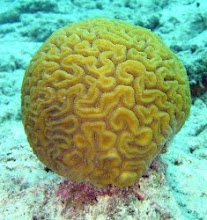
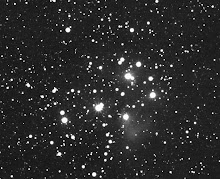
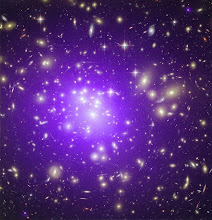
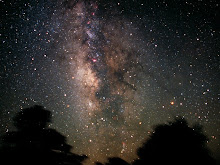
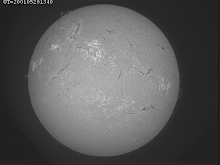

No comments:
Post a Comment